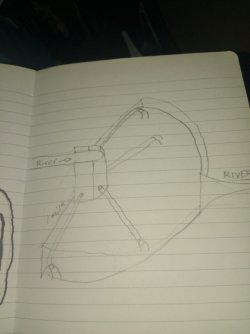trevorjohnson83
VIP Member
- Nov 24, 2015
- 740
- 95
- 88
This new type of dam is based on the idea that surface area of the earth can be shaped so that the river doesn't back up. The dam can be built at any point in any river. What you do is build a typical dam and on the other side of the dam excavate the land so that you widen the river. River current can then be re directed and would run faster at a shallow rate. So instead of water getting backed up by a typical dam, the water runs right through the pipes in the pictures and you can take energy out of the current by changing the surface area resistance of the earth.




